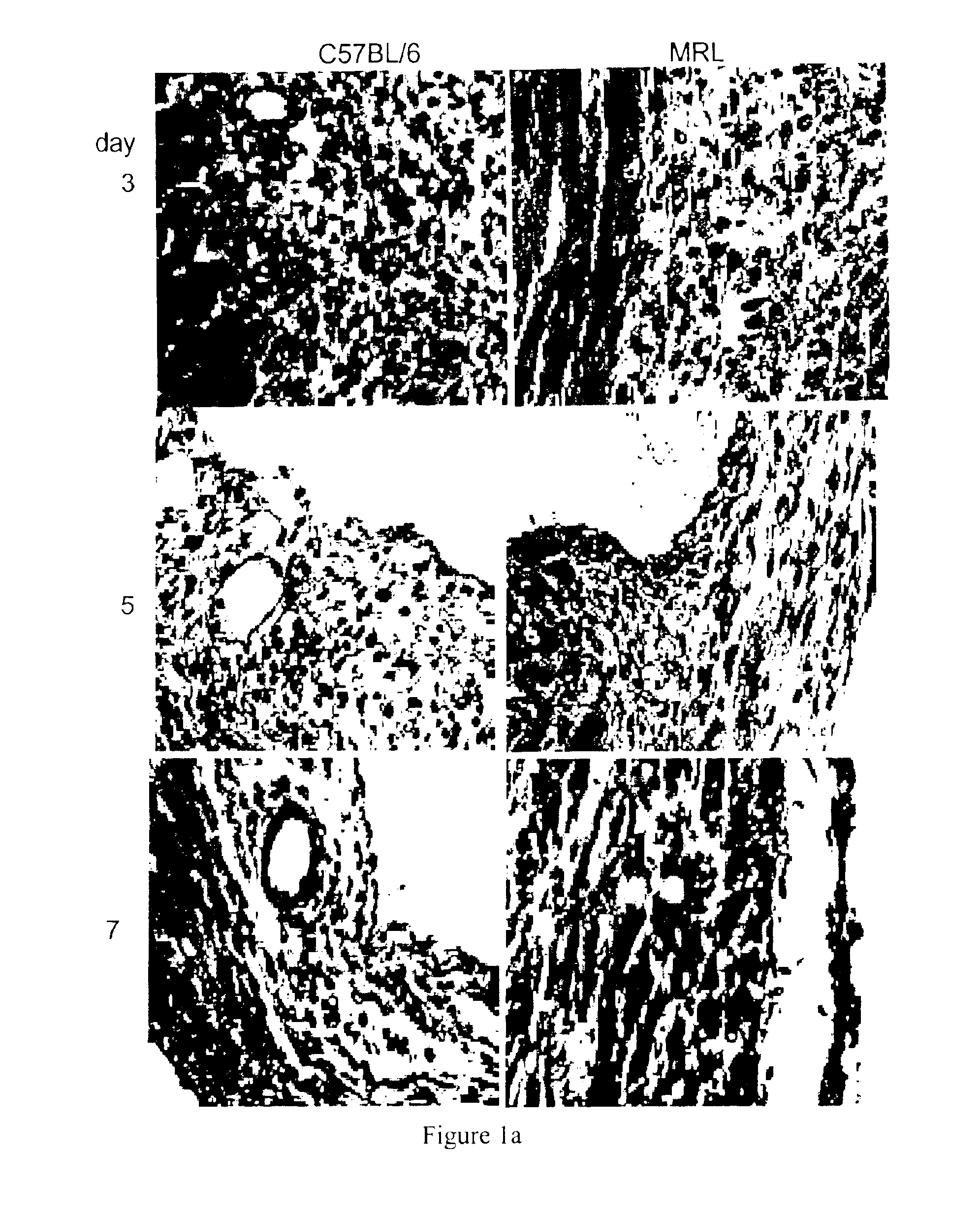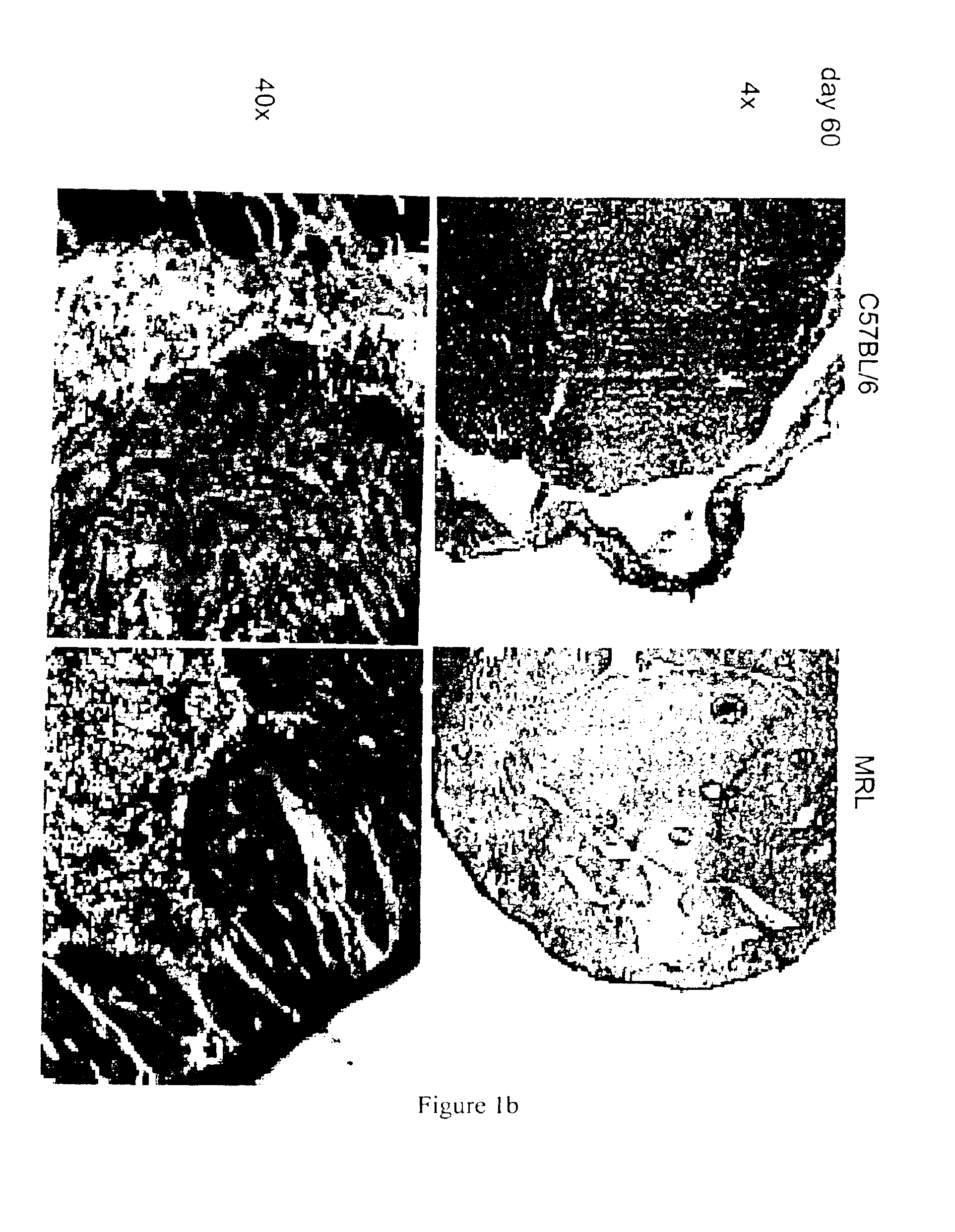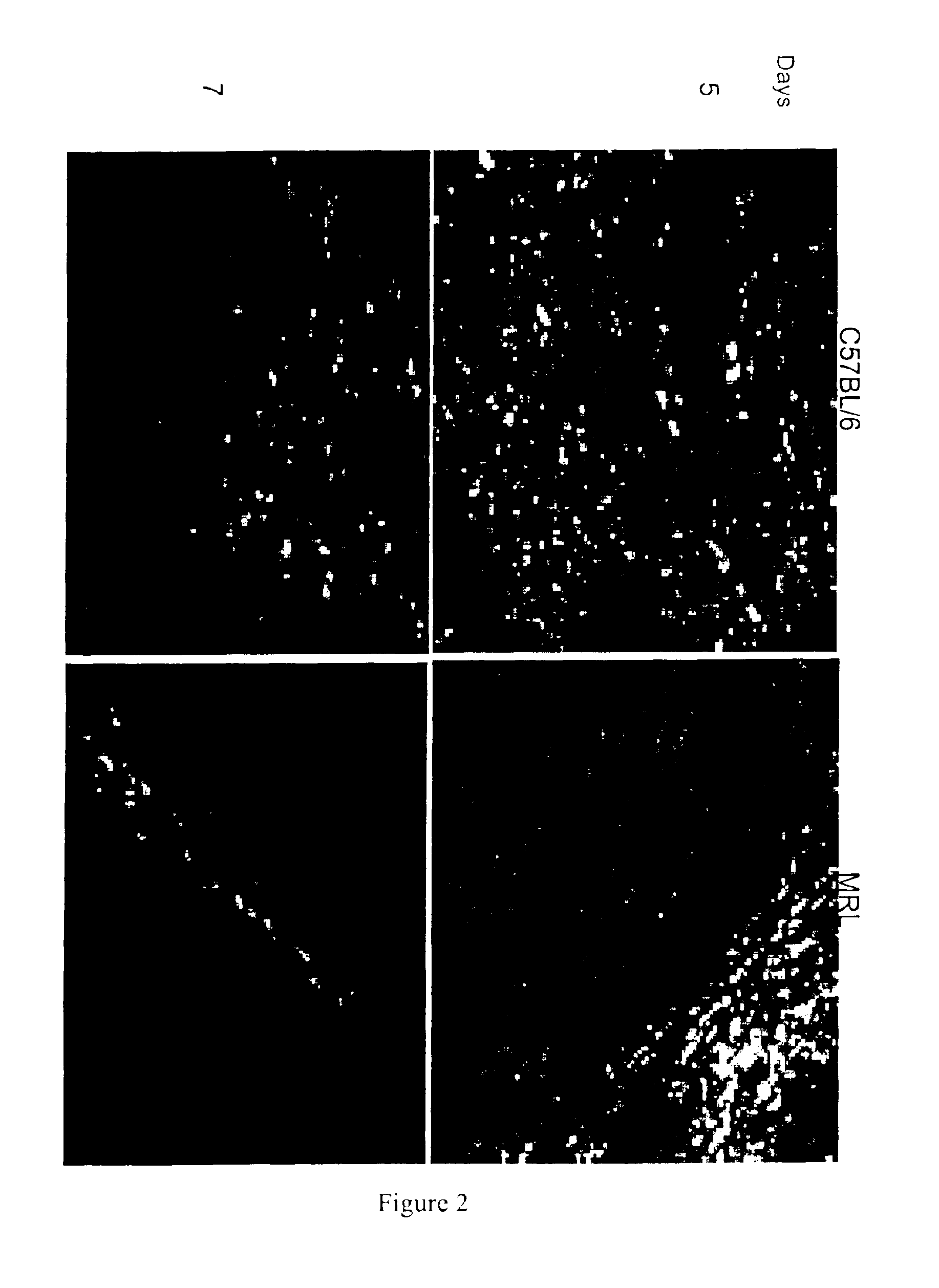Methods and compositions for healing heart wounds
- Summary
- Abstract
- Description
- Claims
- Application Information
AI Technical Summary
Benefits of technology
Problems solved by technology
Method used
Image
Examples
example 1
Materials and Methods
Mice. The MRL / Mp+ / + (“healer”) mouse was obtained from the Jackson Laboratory (Bar Harbor, Me.) and the C57BL / 6 (“nonhealer”) control strain was acquired from the Taconic Laboratory (Germantown, N.Y.). Both mouse strains were bred and maintained under standard conditions at The Wistar Institute (Philadelphia, Pa.). These mice and their relative ability to heal wounds are described in Desquenne Clark et al. Clin. Immunol. Immunopathol. 88, 35-45, 1998.
Antibodies. Primary antibodies against PCNA (mMab; NA03; Calbiochem), Ki-67 (mMab; NCL-Ki67-MM1; Novacastra Labs Ltd), BrdU (mMab Fab2; 1585 860; Boehringer Mannheim), sarcomeric α-actinin (mMab; A7811; Sigma), α-smooth muscle actin (mMab; IMMH-2; Sigma), FGF-2 (sc-79-G; Santa Cruz Biotech; CA), caspase 3 (rabbit; AF835; R&D Systems, Inc), BC1-2 (rabbit; PC68; Oncogene), were used for immunohistochemistry. Secondary antibodies used included biotin conjugates of donkey-anti-mouse, donkey-anti rabbit IgG and donkey-an...
example 2
Cardiac Muscle Regeneration in MRL Mice
Adult healer (MRL / +) and non-healer (C57B1 / 6) mice (6-8 weeks of age) were anaesthetized using an intraperitoneal injection of ketamine (100 mg / kg) and xylazine (15 mg / kg). Myocardial injury was then cryogenically initiated. A 2 mm diameter blunt probe cooled to the temperature of liquid Nitrogen was then introduced, trans-diaphragmatically, to the right ventricular surface of the heart. Injury thus induced precluded complications inherent to a thoracic approach to the heart and had the following: it eliminated the need for artificial ventilation, it did not compromise the pneumothorax, it reduced the overall extent of trauma in tissues in vicinity to the heart and adjacent thoracic structures and organs, and it co-induced an injury to the diaphragm, a striated, skeletal muscle, with which to compare the responses of the two distinct striated muscle types to injury and their subsequent regenerative processes.
Access to the diaphragm was accompli...
example 3
Cardiac Muscle Regeneration in B6 Congenic Mice
B6 congenic mice, which contain approximately 98% nonhealer B6 genes and 2% healer MRL genes, have been shown to heal ear hole wounds. McBrearty et al., Proc. Natl. Acad. Sci. U.S.A. 95, 11792-97, 1998. These mice then received a cryo-injury of the heart. Analysis of two such animals showed that on day 15, healing was more similar to that in the MRL mouse than the B6 mouse. In fact, healing was even better than that in the MRL mouse. This is similar to what has been found in the ear, where wounds in the B6 congenic mouse heal better than those in the original MRL healer mouse.
This result indicates that the genes that have been selected in the B6 congenic mice for the healing of ear hole wounds include genes that are involved in healing of heart tissue.
PUM
| Property | Measurement | Unit |
|---|---|---|
| Level | aaaaa | aaaaa |
Abstract
Description
Claims
Application Information
 Login to View More
Login to View More - R&D
- Intellectual Property
- Life Sciences
- Materials
- Tech Scout
- Unparalleled Data Quality
- Higher Quality Content
- 60% Fewer Hallucinations
Browse by: Latest US Patents, China's latest patents, Technical Efficacy Thesaurus, Application Domain, Technology Topic, Popular Technical Reports.
© 2025 PatSnap. All rights reserved.Legal|Privacy policy|Modern Slavery Act Transparency Statement|Sitemap|About US| Contact US: help@patsnap.com



